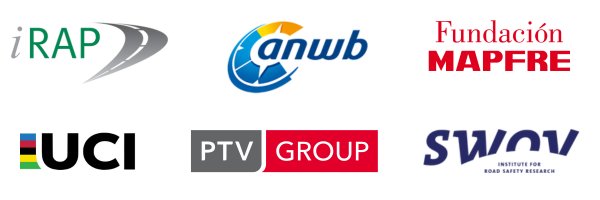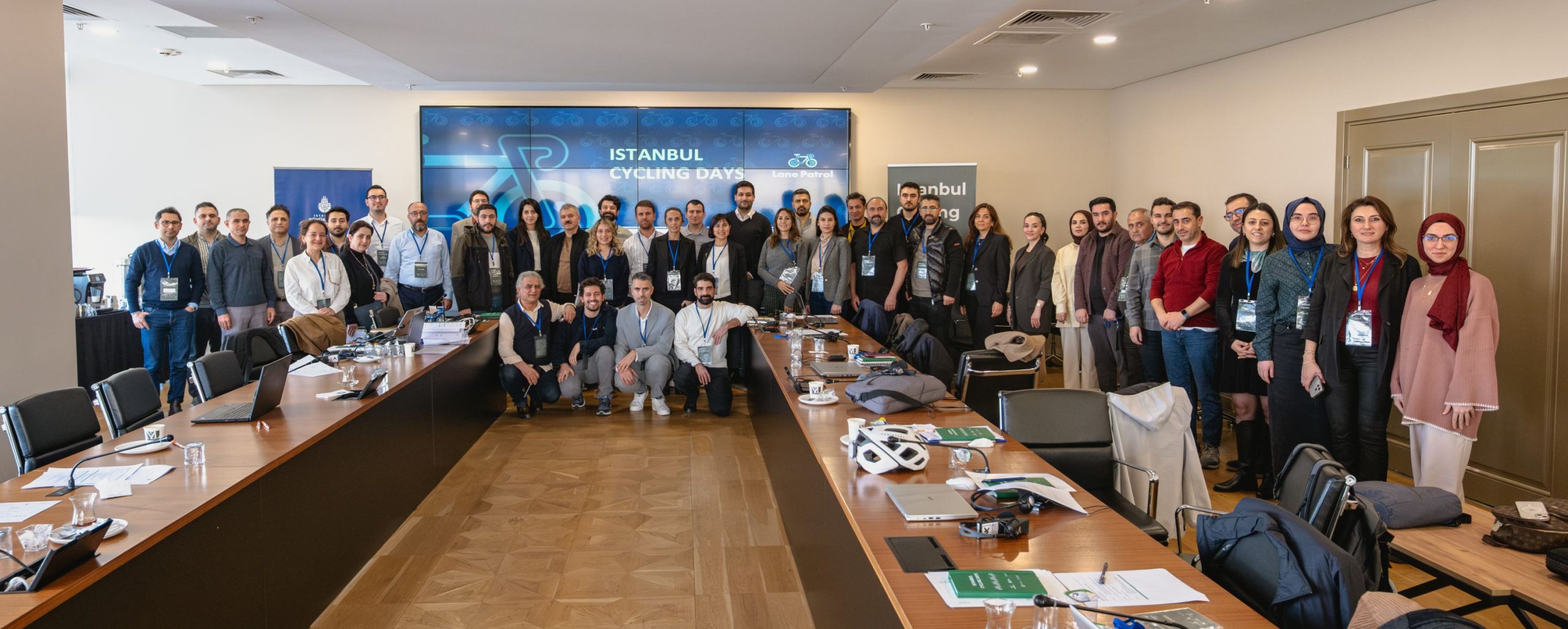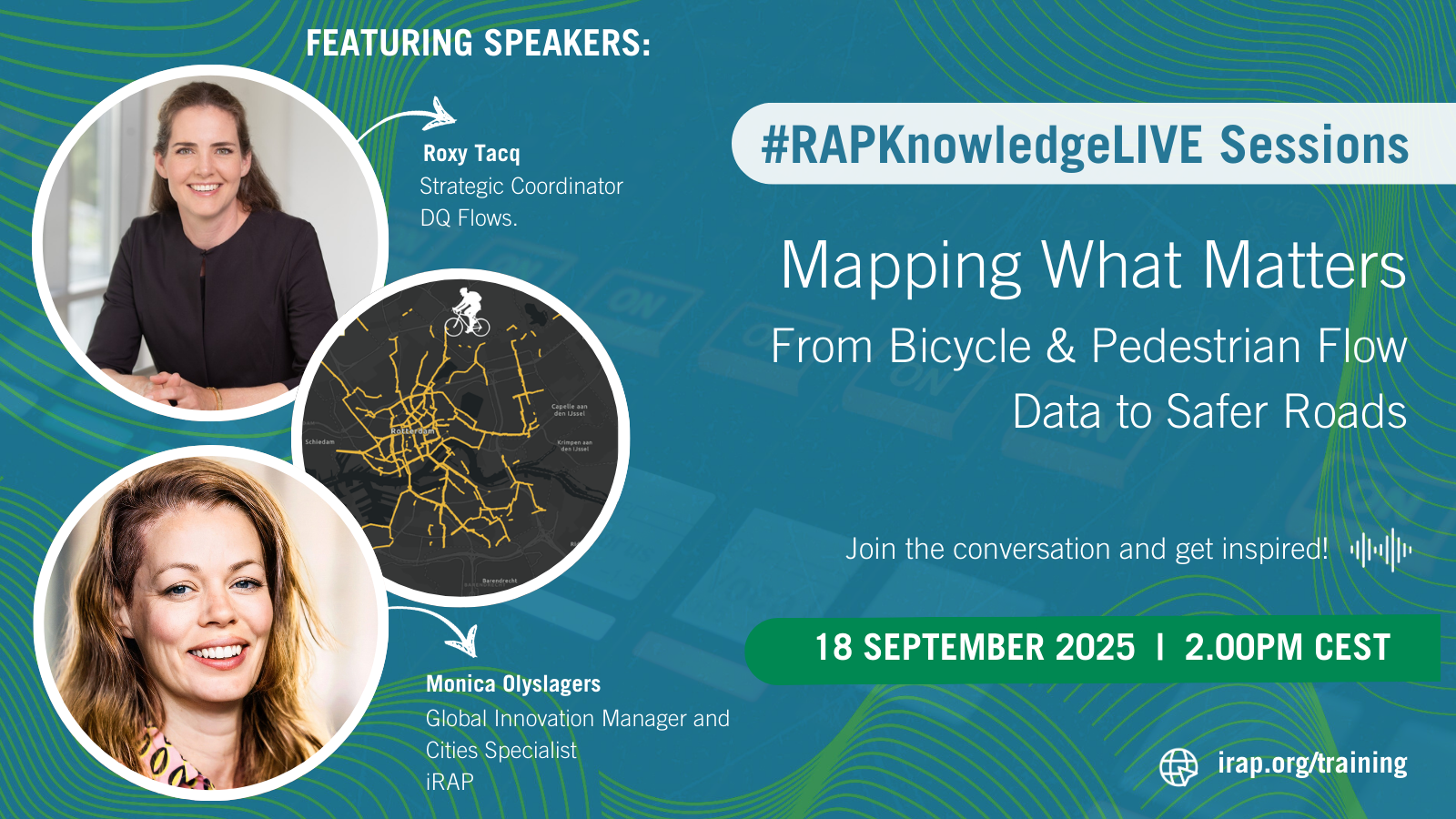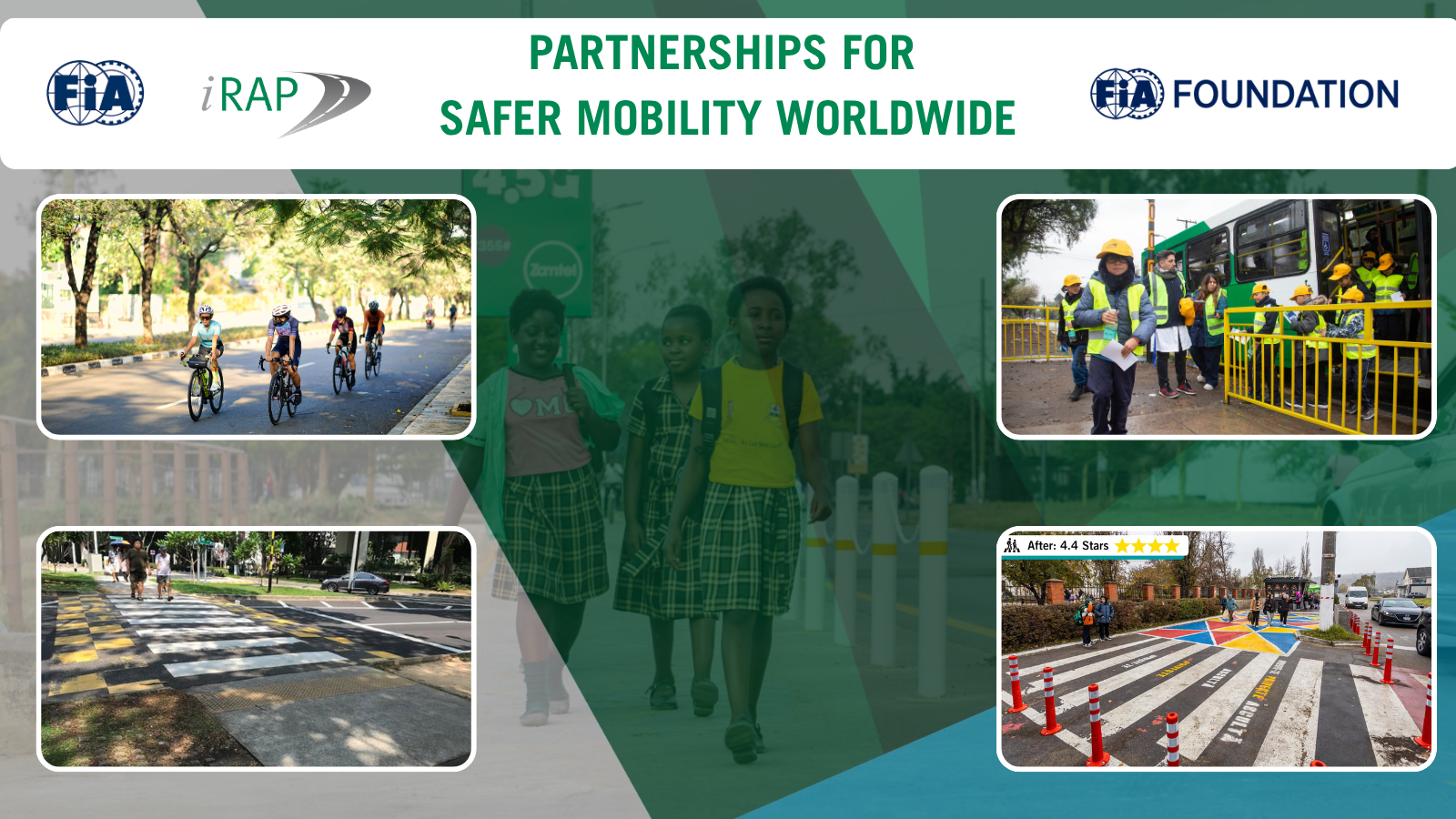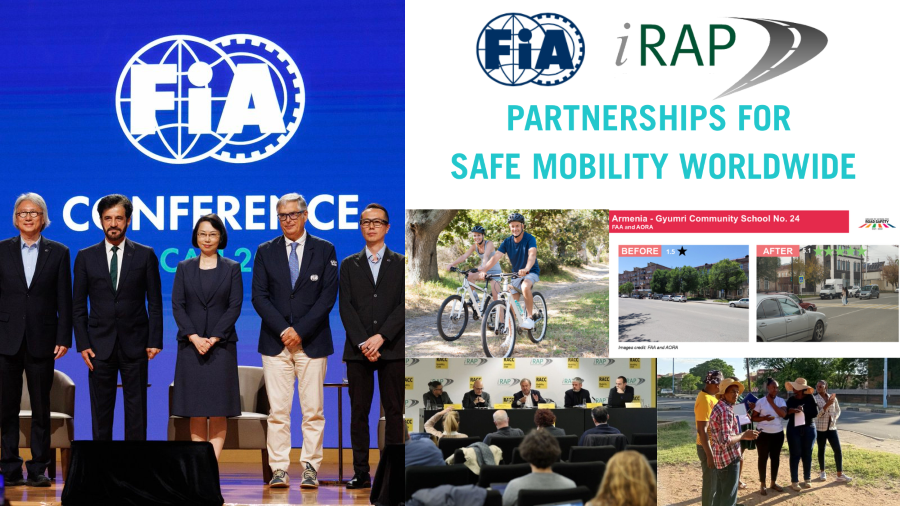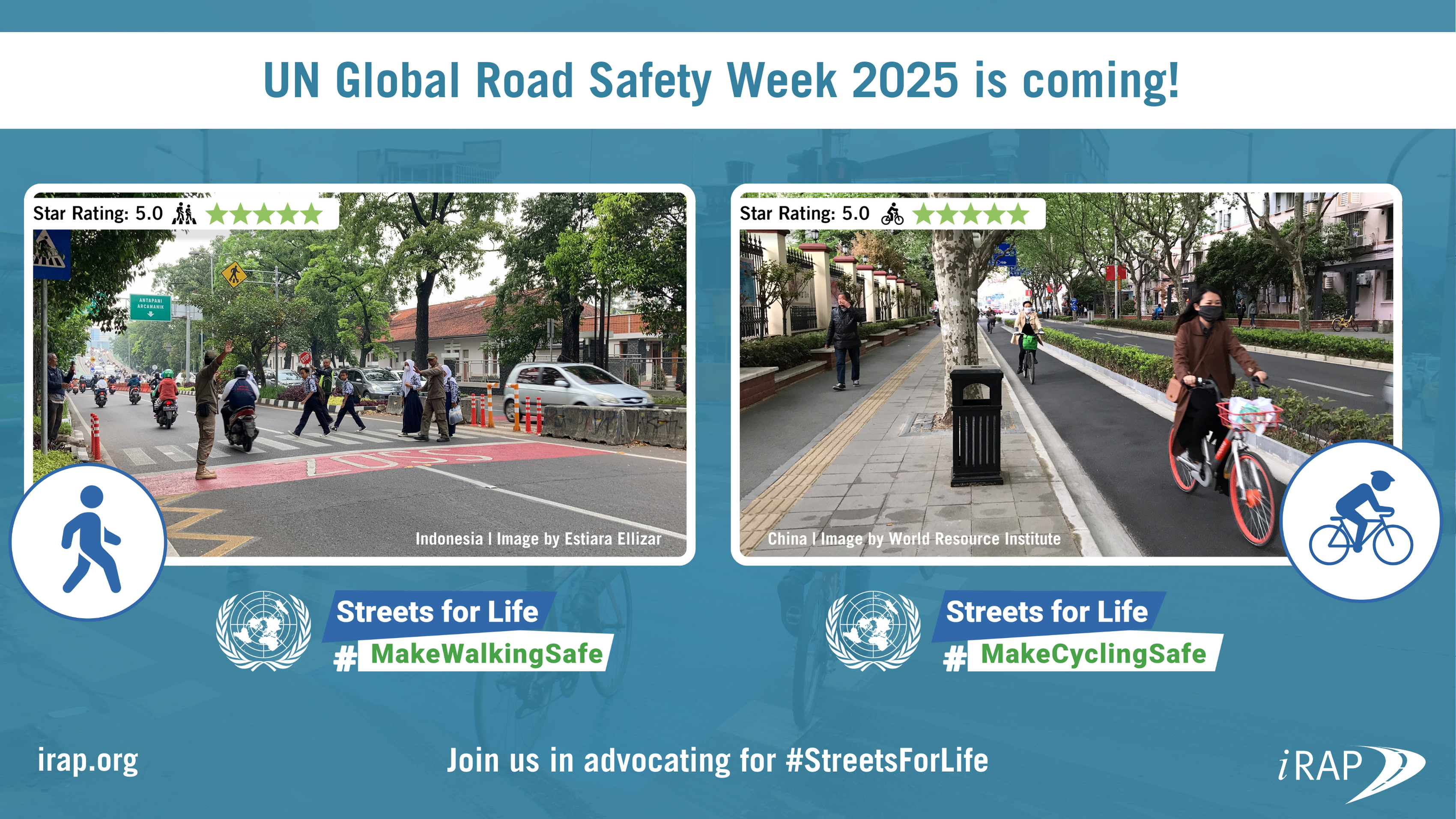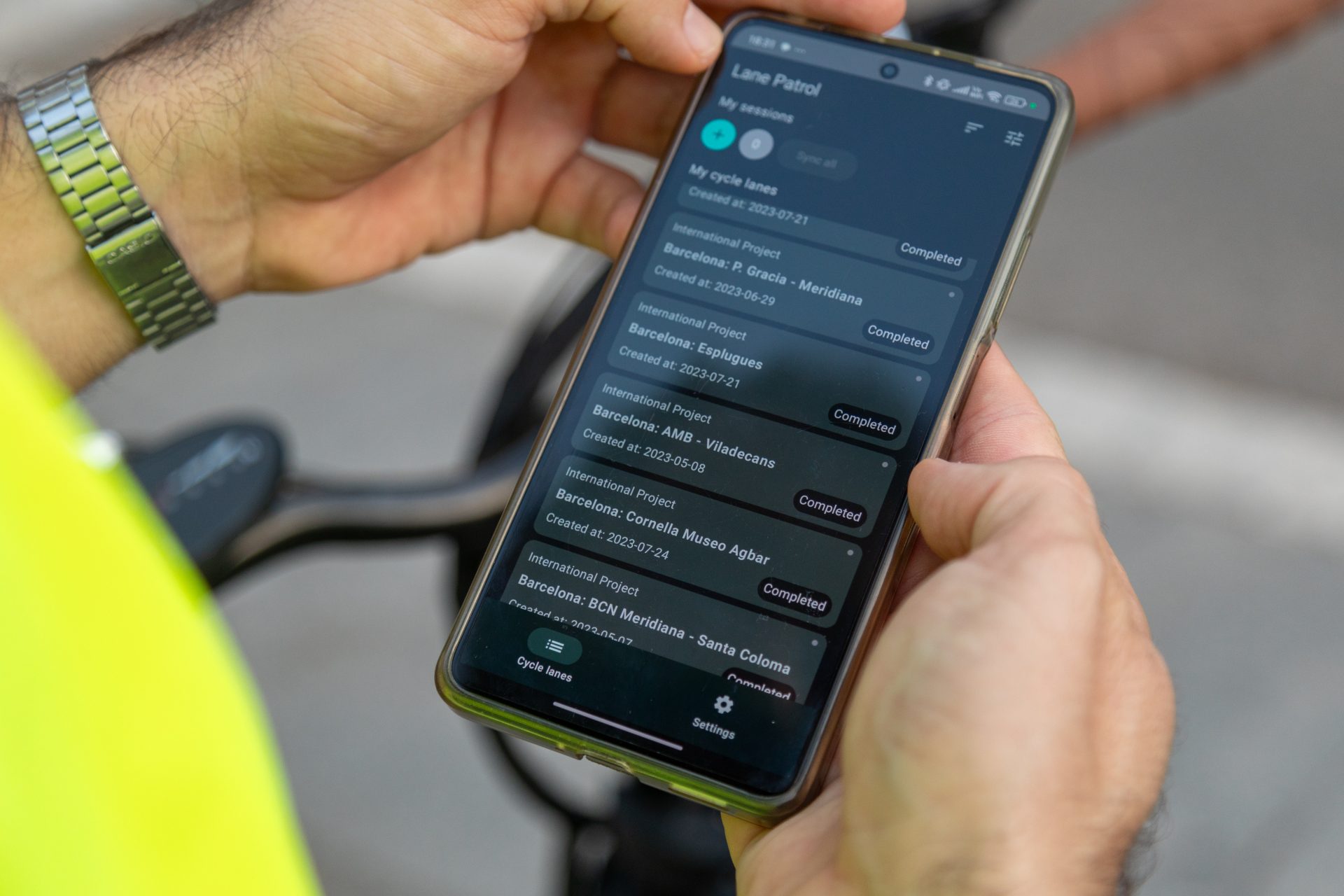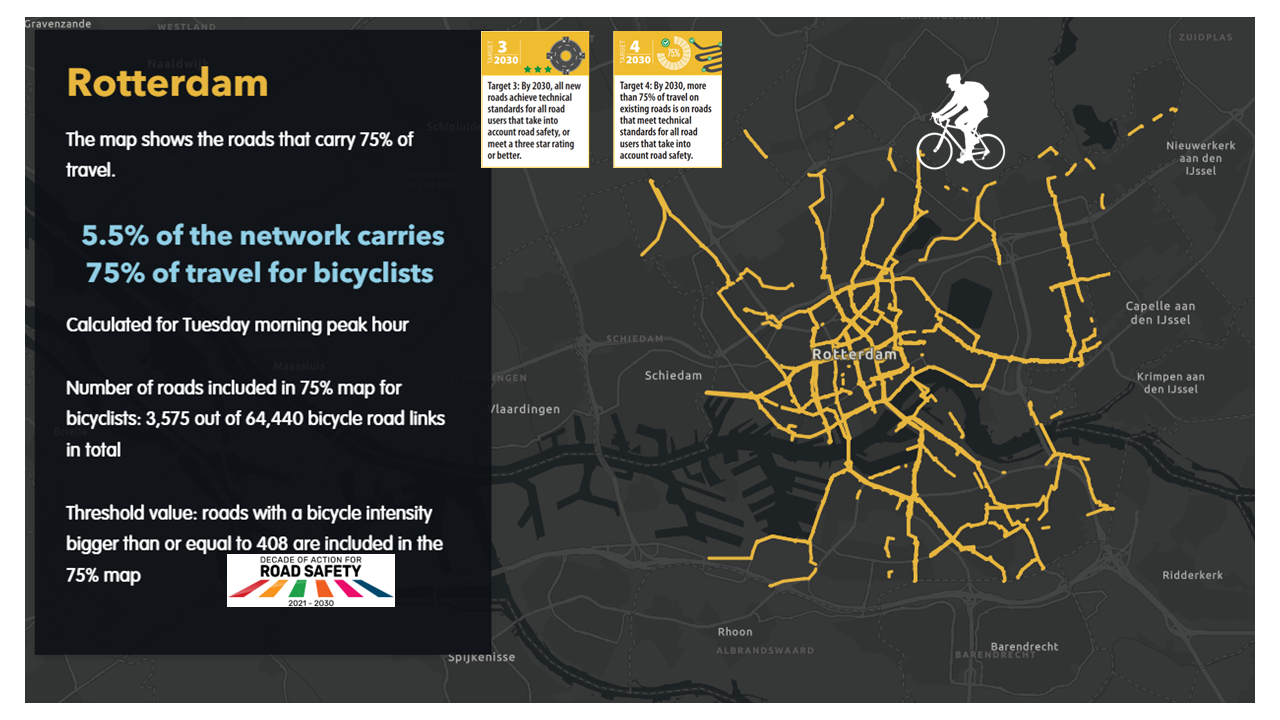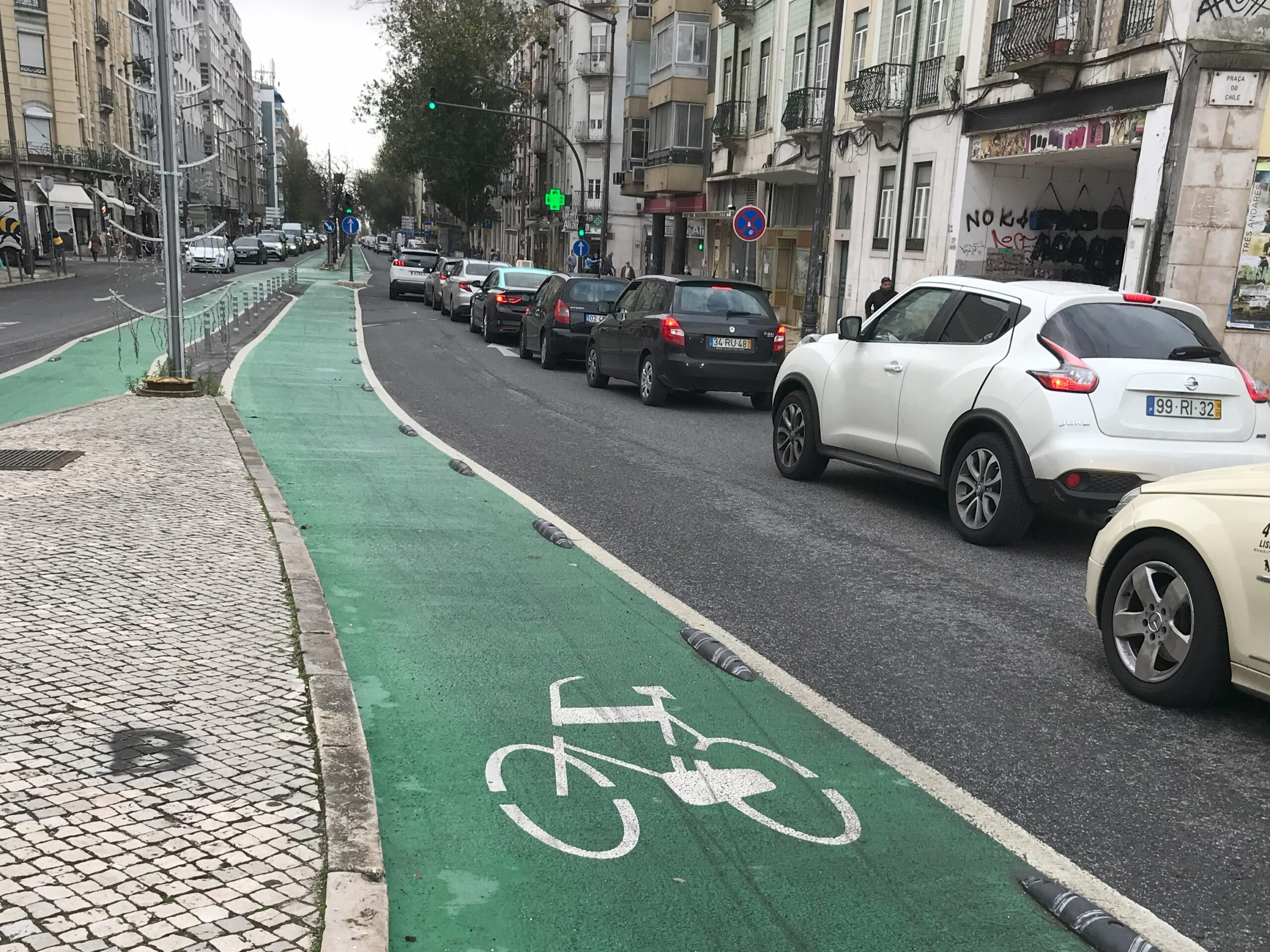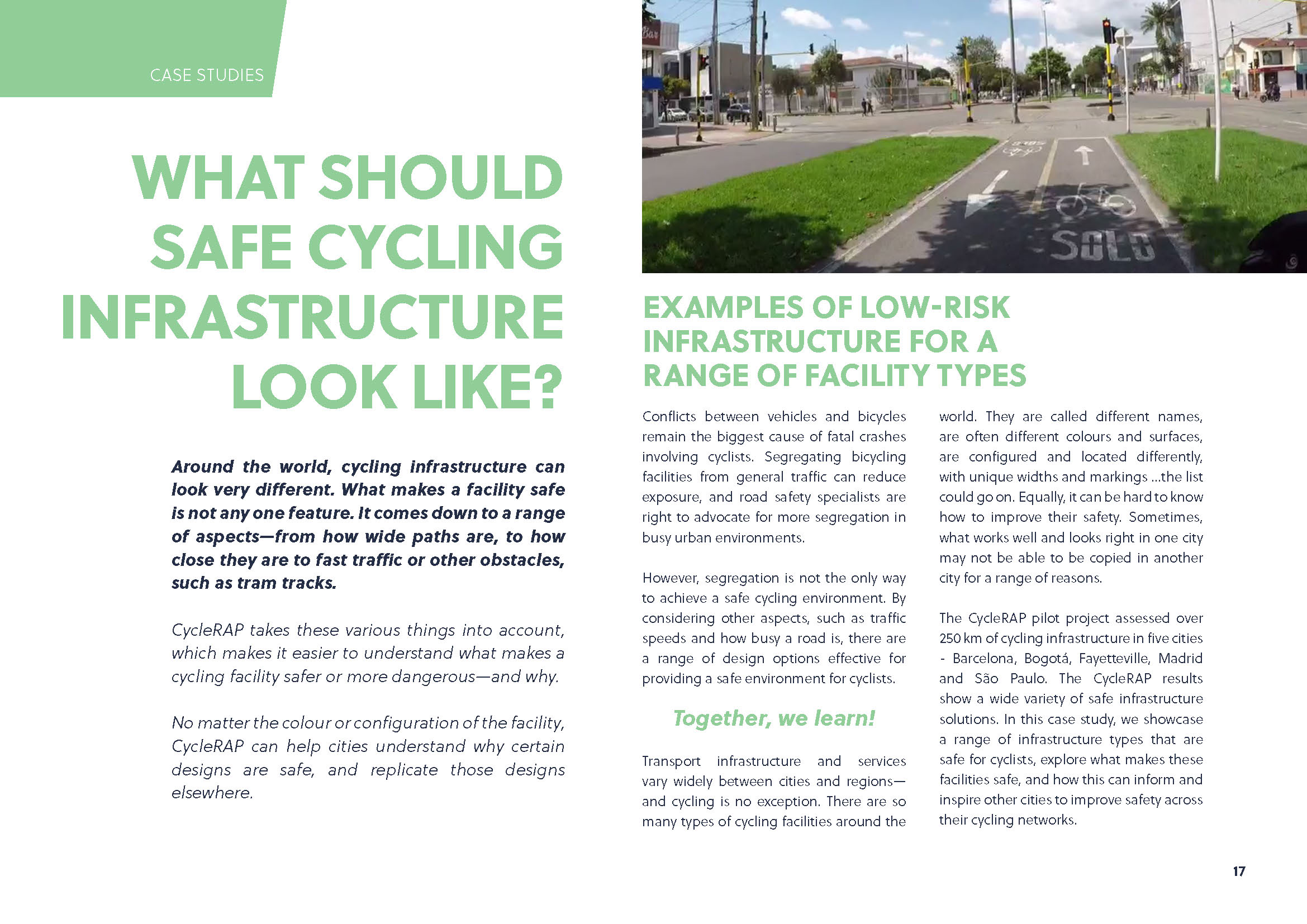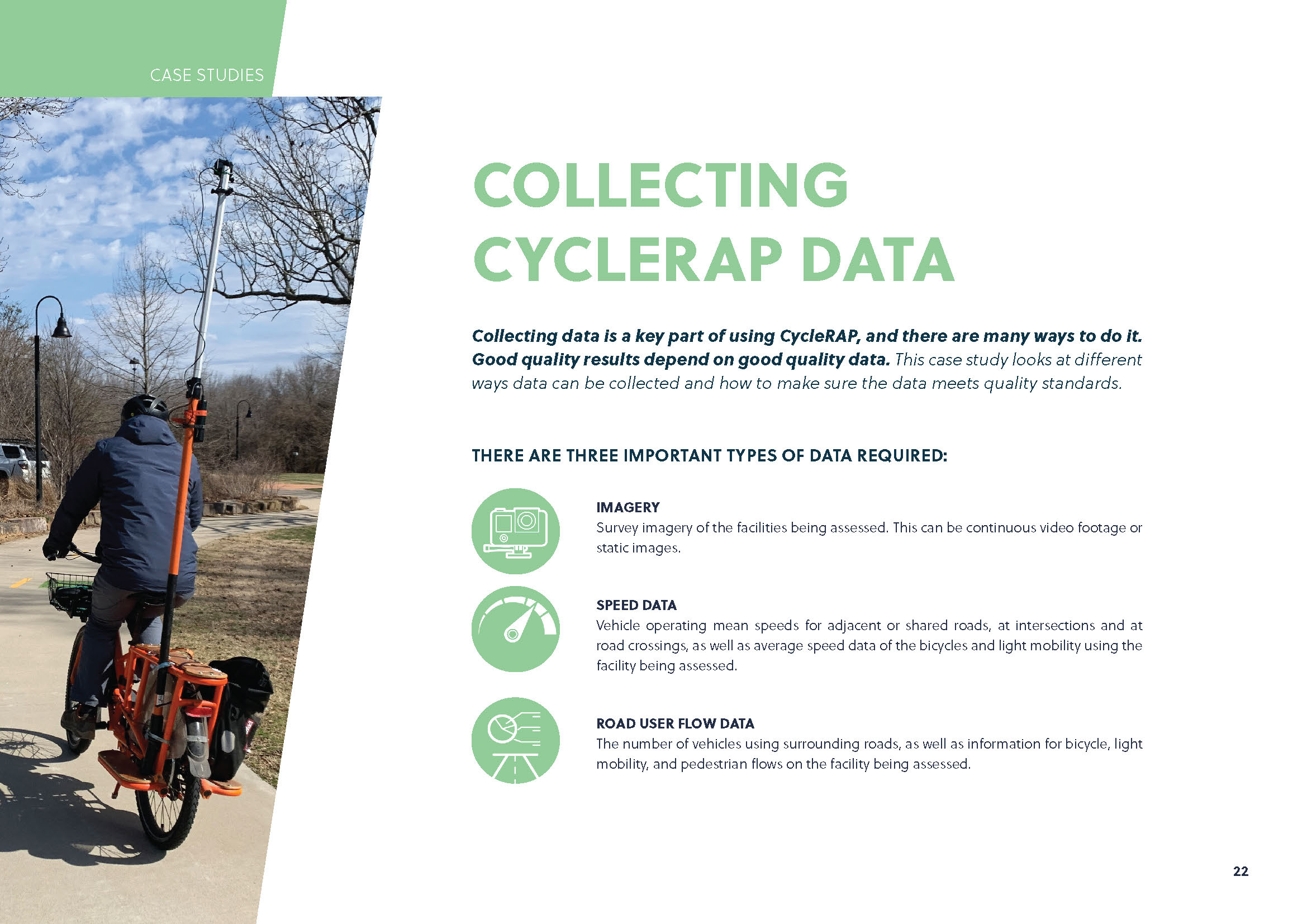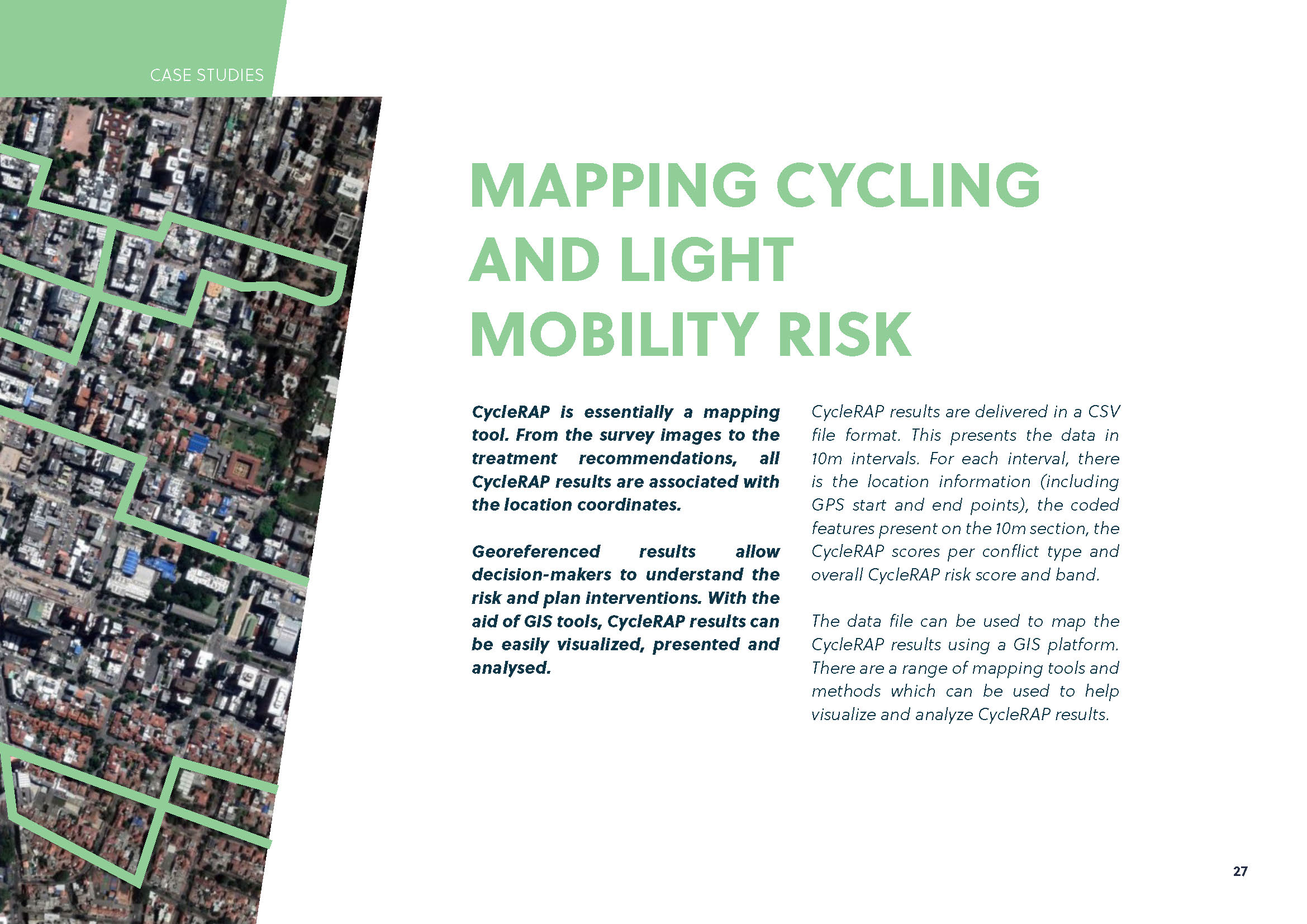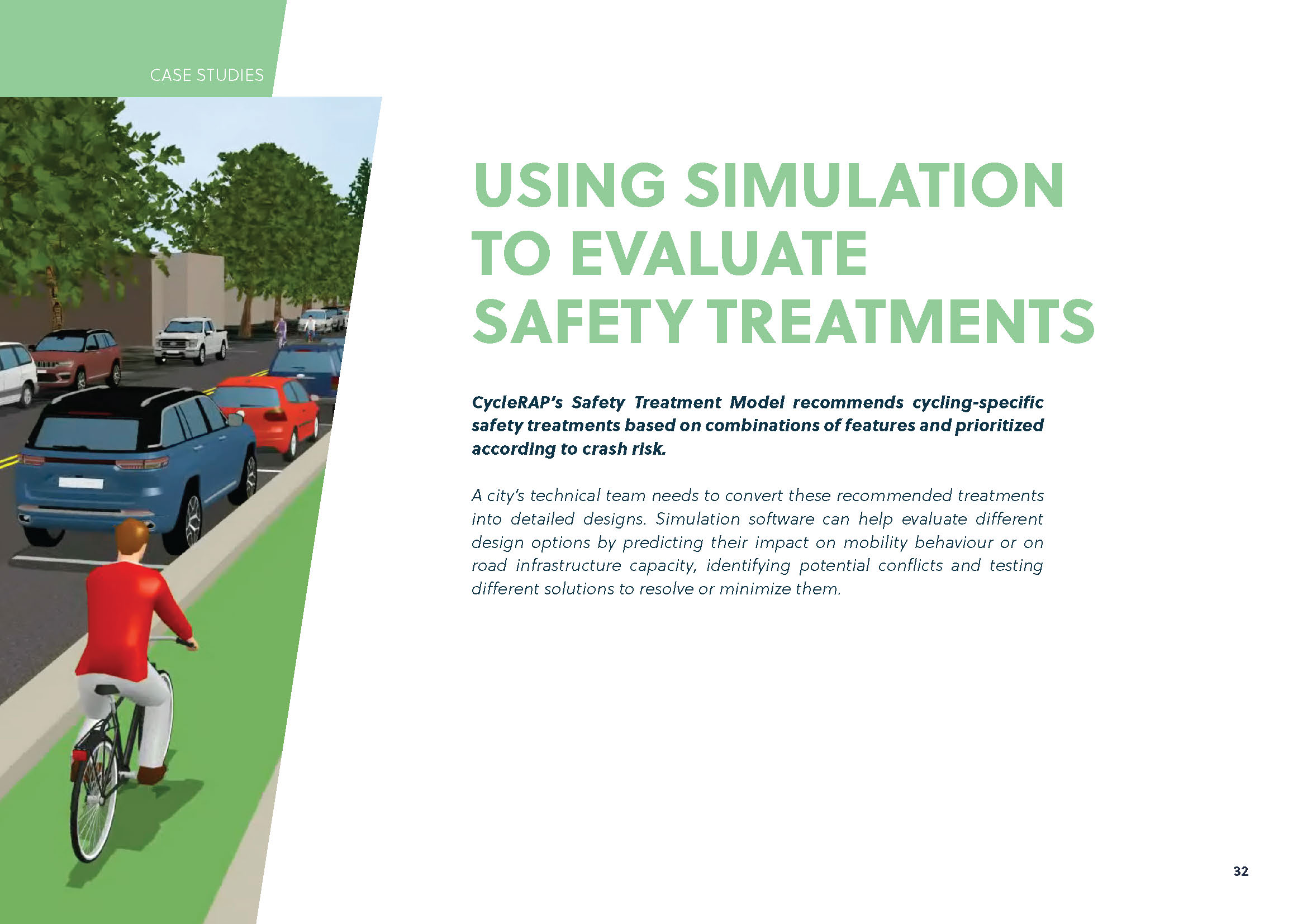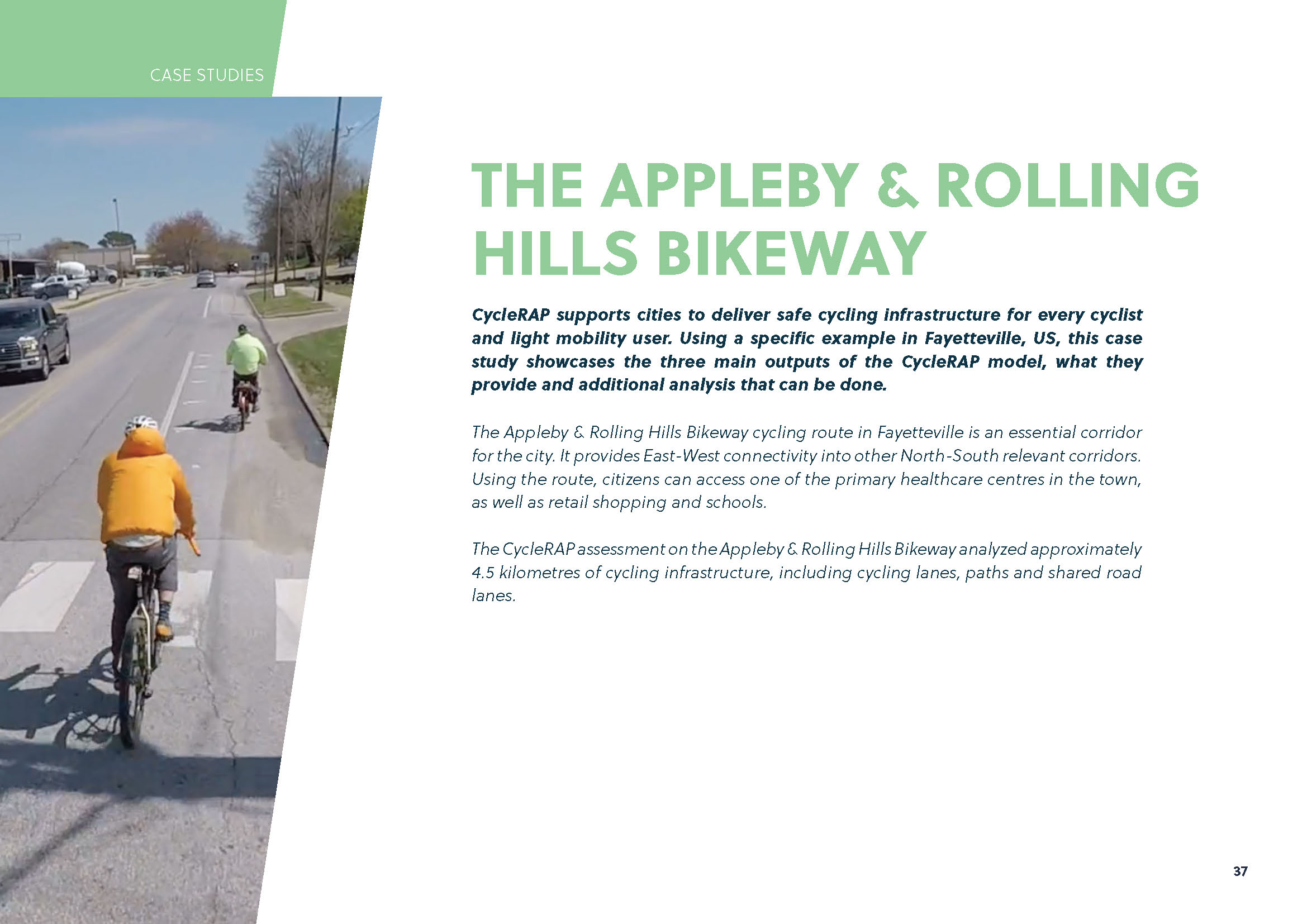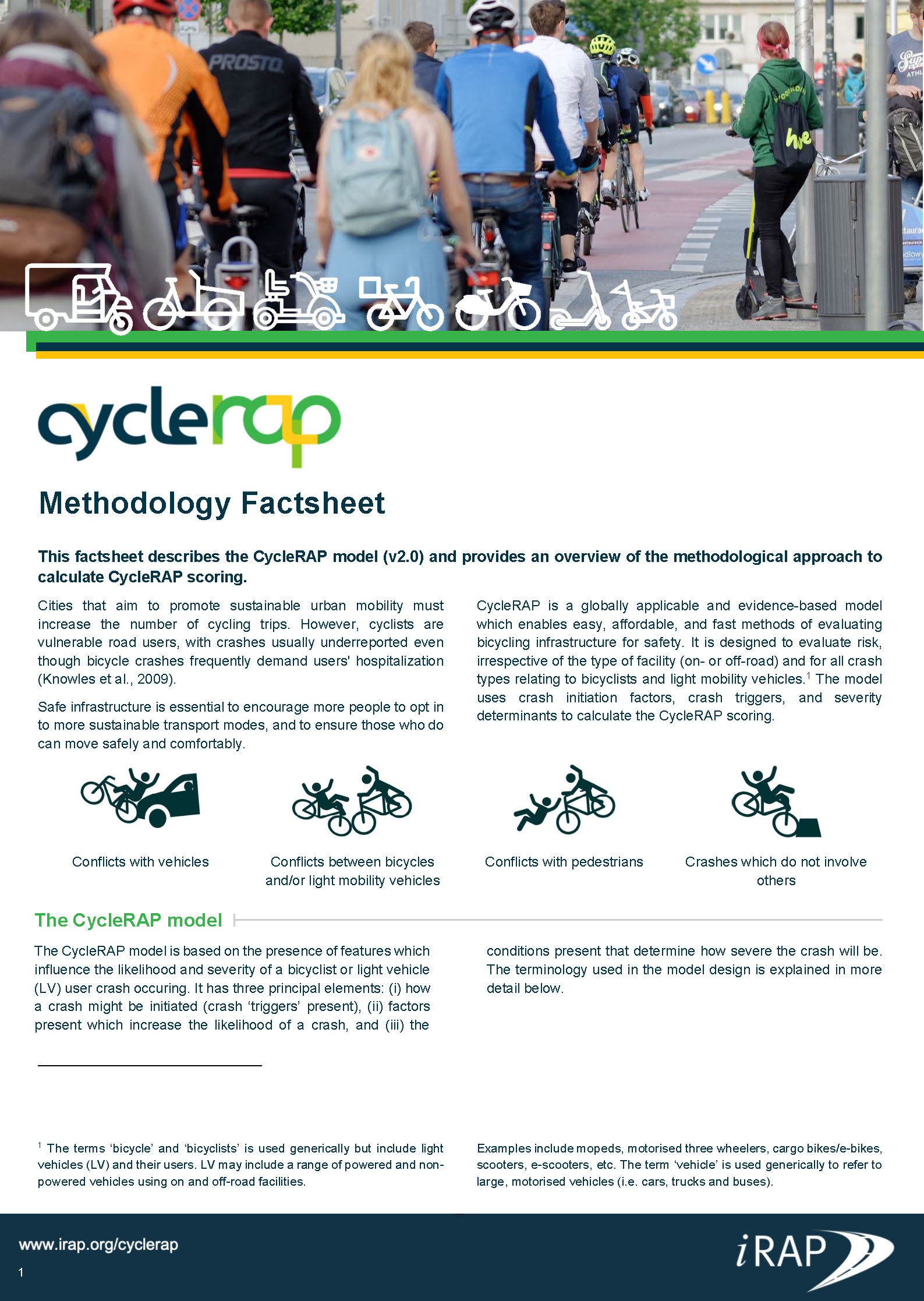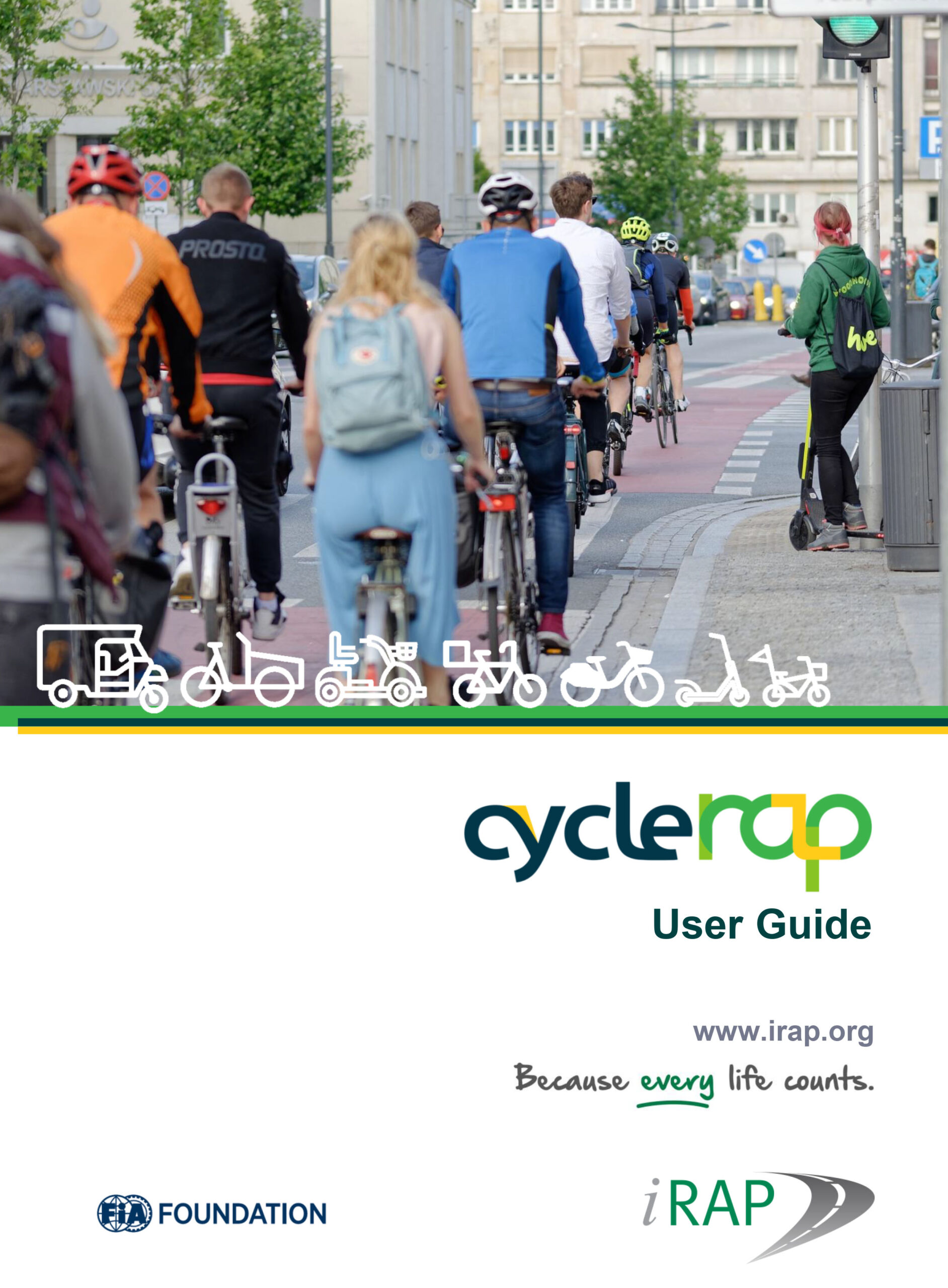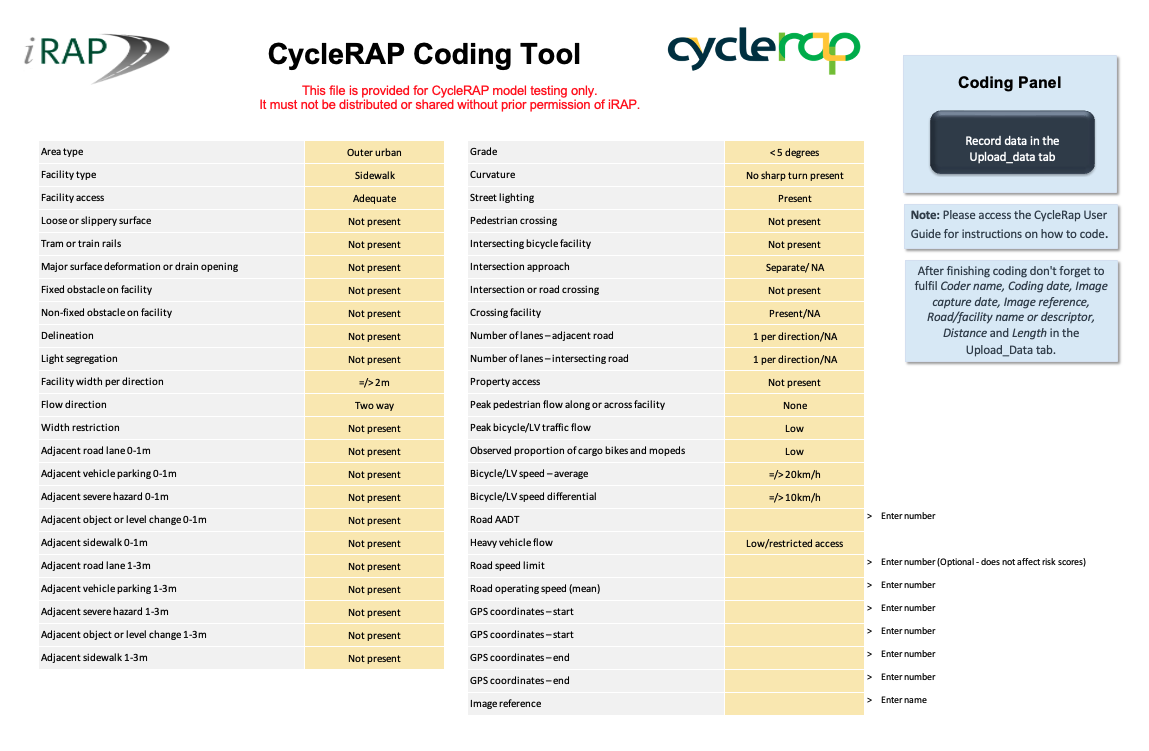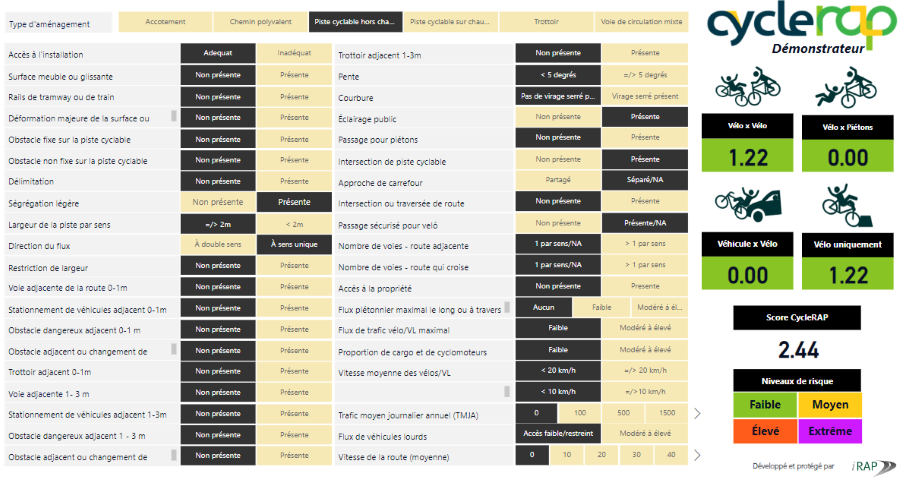
What is ‘CycleRAP’?
CycleRAP is an easy, affordable and fast method of evaluating road and bicycling infrastructure for safety. It aims to reduce crashes and improve safety specifically for bicyclists and other light mobility users by identifying high risk locations without the need for crash data.
Latest news
Klik hier voor meer informatie over de geschiedenis van CycleRAP (NL)
CycleRAP in Nederland
CycleRAP is in Nederland ontstaan in 2013. De methodiek is ontwikkeld door SWOV in opdracht van de ANWB. Het initiatief ontstond vanuit de behoefte van Nederlandse wegbeheerders om de veiligheid van fietsinfrastructuur beter te kunnen beoordelen, gezien het toenemende aantal enkelzijdige fietsongevallen.
Het aantal enkelzijdige fietsongevallen is helaas sindsdien alleen maar verder gestegen in Nederland. De landelijke ongevallenstatistieken uit BRON laten er in de laatste jaarcijfers geen misverstand over bestaan: van de ernstige verkeersgewonden in Nederland is 70% een fietser. Veelal gaat het om fietsers welke eenzijdig gewond raken.
In Nederland hebben we niet altijd goed zicht op waar deze enkelzijdige ongevallen plaatsvinden. Daarom heeft SWOV vanaf 2013 intensief onderzoek verricht naar de factoren die bijdragen aan fietsrisico’s, wat leidde tot de ontwikkeling van de eerste versie van CycleRAP. De methodiek is vervolgens getest en verfijnd in verschillende Nederlandse gemeenten, waarna het werd geïntegreerd in het internationale Road Assessment Programme (iRAP).
De CycleRAP methodiek is gezien het toenemend aantal (enkelzijdige) fietsongevallen goed bruikbaar om proactief risico’s te signaleren en te elimineren. Zeker omdat de methodiek de periode van doorontwikkeling heeft doorlopen. Daarnaast is er nu veel meer data beschikbaar waardoor CycleRAP eenvoudiger kan wordt ingezet.
Geschiedenis van CycleRAP
In 2013 kreeg SWOV de opdracht (van de ANWB) om een systeem te ontwikkelen ter beoordeling van de veiligheid van fietsinfrastructuur. Onder de noemer “Safe Cycling Network” is onderzoek gedaan naar gevaar verhogende indicatoren. In gemeente Harderwijk en Goes is praktijk ervaring opgedaan met het systeem. Daarnaast is er een belevingsonderzoek uitgevoerd in Gelderland waarbij fietsers de veiligheid van fietsvoorzieningen beoordeelden. Na afloop van de studie is de bèta versie van CycleRAP toegepast op een fietsroute in Friesland. Het onderzoek is mogelijk gemaakt met financiering van de FIA Foundation en bijdrage van Provincie Gelderland en Provincie Friesland.
In 2016 startte SWOV in opdracht van de ANWB en gemeente Amsterdam een tweede studie waarin de bèta versie van CycleRAP getest werd in Amsterdam. De methodiek werd toegepast als onderdeel van de ‘Network Safety Index’, waarbij ook de auto infrastructuur in kaart werd gebracht. Op basis van dit onderzoek kon gevalideerd worden welke wegkenmerken een relatie hebben met ongevallen. Het NSI onderzoek vindt u hier.
De bèta versie van CycleRAP die door SWOV ontwikkeld is bevat een lijst van wegkenmerken die gestructureerd in kaart gebracht worden. De score is een optelling van wegkenmerken die risico verhogend zijn. Om het risico op een ongeval te kunnen voorspelling is een weging van wegkenmerken, intensiteiten en snelheden noodzakelijk. De iRAP sterrenmethodiek werkt ook op die manier. Daarom is in 2017 gestart met het bouwen van een risicomodel voor de fiets. Hieraan is een bijdrage geleverd door experts van Provincie Friesland, de ANWB en iRAP.
In 2017 zijn de eerste projecten van start gegaan met CycleRAP 1.0. De noordelijke proeftuin verkeersveiligheid (Provincie Drenthe, Friesland, Groningen), de MRDH en provincie Gelderland hebben opdracht gegeven om een deel van hun wegennet te analysen. Enkele bedrijven zijn geselecteerd en getraind om met CycleRAP te werken. Deze projecten maakte het mogelijk om het model te ontwikkelen en testen. De rapportages kunt u vinden onder ‘pilot projecten in Nederland’.
Het CycleRAP model 1.0 gaf met indexscores inzicht in het risico op auto-fietsongevallen, fiets-fiets ongevallen, enkelzijdige fietsongevallen en fiets-voetgangersongevallen. De projecten leverde waardevolle feedback op van de betrokken overheden en bedrijven. Bijvoorbeeld de wens om de index scores te classificeren in sterrenscores en om de invloed van wegkenmerken nader te analysen.
In 2019 heeft iRAP in samenwerking met SWOV (in opdracht van de ANWB) een literatuur onderzoek uitgevoerd. Het gaat om een meta-studie naar literatuur uit diverse taalgebieden. Dit is samen gedaan met WRI (uit Brazilië) en Viatrafik (uit Denenmarken), waarbij SWOV ook een peer-review heeft gedaan. De focus lag op het vinden van studies naar fietsongevallen zonder gemotoriseerde tegenpartij, omdat hierover het minst bekend was. Bekijk de resultaten van het literatuur onderzoek. Op basis van het onderzoek is de methodiek verder ontwikkeld tot versie 2 welke in 2022 internationaal gelanceerd is.
Pilot projecten in Nederland
In de periode 2017-2019 is CycleRAP (versie 1) toegepast in diverse regio’s in Nederland. De projecten hebben voor de wegbeheerders waardevolle inzichten opgeleverd in de veiligheid van hun infrastructuur, de risico’s en inzichten hoe de fietspaden vergevensgezinder gemaakt kunnen worden. De wensen en inzichten van de wegbeheerders welke naar voren kwamen tijdens de projecten zijn meegenomen in de doorontwikkeling van de CycleRAP methodiek.
Provincie Friesland: In opdracht van Provincie Friesland zijn vijf routes langs de provinciale wegen in kaart gebracht. In totaal 50 kilometer. De routes lopen over fietspaden langs de provinciale wegen tot in de kernen van Leeuwarden, Sneek, Heerenveen en Wolvega. Lees het rapport
Provincie Drenthe: In opdracht van Provincie Drenthe zijn zeven routes (80 kilometer aan fietspaden) in kaart gebracht. Lees hier het rapport
Provincie Groningen: In opdracht van Provincie Groningen zijn vier routes langs de provinciale wegen, 41 kilometer in totaal, kaart gebracht. Lees hier het rapport
Metropoolregio Den Haag - Rotterdam: De Metropoolregio Den Haag - Rotterdam heeft drie routes in kaart laten brengen. Een route in het centrum van Den Haag, een route door Zoetermeer en een route van Rotterdam/Schiedam naar Delft, 30 kilometer in totaal. Lees hier het rapport
Provincie Gelderland: Twee routes met fietspaden langs de N840 en N786 zijn in kaart gebracht (circa 20 km). Er is geen rapportage van gemaakt.
Waterschap Rivierenland: Project waarbij 180 kilometer in de regio Alblasserwaard en Vijfheerenlanden in kaart gebracht wordt. De routes liggen op de dijken en in de polder langs de lintbebouwing. Het rapport is niet gepubliceerd.
About
CycleRAP uses data about the features of a road, street or path to evaluate the risk of crashes for bicyclists and light mobility users—irrespective of the type of facility (or whether it is on or off road) and for all crash types. It can be used anywhere in the world.
CycleRAP is used to:
- Improve bicycling-related asset management and maintenance planning
- Help prioritise investment and planning for bicycle and light mobility modes, and
- Provide safety key performance indicators and track performance over time.
What problem does CycleRAP help solve?
Road safety is a critical issue which needs to be addressed to ensure that bicycling and light mobility options can continue to support new and greener mobility choices. The overall aim of CycleRAP is to reduce the risk of road crashes for bicyclists and those using other types of light mobility vehicles. Bicycles and light mobility vehicles do not have the same in-built protection large vehicles have. Therefore, safe infrastructure is critical.
Monitoring, managing and addressing safety on facilities used by bicyclists and light mobility vehicles is a challenge, even for those with the most advanced bicycling networks. Specifications and manuals for road engineering and design for bicycling infrastructure, assessment tools such as road safety audit, and road asset management practices often neglect or ignore safe bicyclist infrastructure. CycleRAP aims to help fill this gap by providing a way to objectively measure and benchmark safety.
Who can benefit from CycleRAP?
CycleRAP is designed to support transport authorities or other organisations involved in addressing or advocating for safer facilities for bicyclists and users of other light mobility vehicles.
Specific uses could be:
- Addressing explicit or general safety concerns for bicyclists and light mobility users
- Evaluating existing network’s capacity to cater for rapidly increasing demand or increase in new vehicle types
- Prioritise funding and investment into bicycling and light mobility infrastructure
- Assist cities formalising rapid response measures for bicyclists during COVID19.
The CycleRAP model and data is expected to be of interest to a wide range of stakeholders, including:
 |
 |
 |
 |
| Transport and urban planners | Bike share and micro mobility sharing service providers | Bicycle courier and food delivery companies | School communities |
 |
 |
 |
 |
| Policy makers and advocates for the environment, climate change and sustainability | Health services and insurance providers | Infrastructure and transport investors | Mapping and navigation providers |
How can I use CycleRAP?
If you would like to know more about using the CycleRAP model, contact iRAP or one of our Trusted Suppliers.
Governance
The CycleRAP model is owned and managed by iRAP. Its development and ongoing governance is guided by the CycleRAP Advisory Group. CycleRAP has benefitted from the generous support of the CycleRAP partners: ANWB, Fundacion Mapfre, UCI and PTV Group.
CycleRAP Advisory Group
A CycleRAP Advisory Group has been established to help guide the development of the CycleRAP model to ensure it can effectively underpin potential CycleRAP tools and applications and ultimately meet end user needs.
Membership is by invite only and aims to represent a range of skills, experience and expertise from across the world, including:
- Cycling safety experts and researchers
- iRAP-affiliated experts (such as Centres of Excellence and suppliers)
- Other organisations involved in road safety
- Potential CycleRAP suppliers.
The job of the Advisory Group is to:
- Peer review reports, model development and model documentation
- Attend update meetings and workshops to work through issues
- Inform the design of model outputs (e.g. risk scoring and safety treatment recommendations)
- Provide feedback on potential uses, pilot study opportunities and market analysis
- Review results from trials and pilot studies.
The CycleRAP Advisory Group members, all of whom generously volunteered their time and effort to the CycleRAP project, are:
| Name | Organisation |
| Aleksander Buczyński | ECF |
| An Volckaert | BRRC (Belgium) |
| Christoph Vollath | RACC (Spain) |
| Gert Jan Wijlhuizen | SWOV (The Netherlands) |
| Niek Prins | Haskoning |
| Magnus Larsson | VTI (Sweden) |
| Katja Kircher | VTI (Sweden) |
| Soufiane Boufous | UNSW (Australia) |
| Ben Beck | Monash University (Australia) |
| Kasem Choocharukul | Chula University (Thailand) |
| Alvin Poi Wai Hoong | MIROS (Malaysia) |
| Leonid Ljubotina | FPZ (Croatia) |
| Ramon Kienhuis | Keypoint Consultancy (The Netherlands) |
| Roxy Tacq | Urban Mobility & Road Safety Expert (Spain/The Netherlands) |
| Max McCardel | Safe System Solutions (Australia) |
| Pedro Homem de Gouveia | POLIS |
| Johan Diepens | Mobycon |
| Marc Figuls | Factual Consulting |
| Agnieszka Krasnolucka | FIA Foundation |
| Jolan Hulscher | Cyclomedia |
| Bas Brouwer | Cyclomedia |
| Gernot Sauter | 3M |
| Nathaly Torregroza Vargas | National Planning Department, Colombia |
| Flavio Soares | Ciclocidade |
Pilot projects
PHOEBE Project
The EU-funded ‘Predictive Approaches for Safer Urban Environment’ (PHOEBE) project aims to increase the road safety of vulnerable road users, especially those who use active mobility and e-scooters. CycleRAP assessments conducted in Valencia and West Midlands use cases. https://phoebe-project.eu

ELABORATOR Project
ELABORATOR is the Horizon EU European Living Lab on designing sustainable urban mobility towards climate-neutral cities. CycleRAP use to assess cycling safety in the living labs interventions. https://www.elaborator-project.eu

The CycleRAP assessment will showcase the best practices of cycling infrastructure in 5 cities: Barcelona, Bogotá, Fayetteville, Madrid and São Paulo. Project end date: October 2023.

The CycleRAP model is being piloted as part of the Interreg SABRINA project to deliver safer bicycle routes across nine Danube area countries. To find out more, visit www.interreg-danube.eu/sabrina

Assessment of Via di Porta Cavalleggeri
CycleRAP helped Rome municipality measure quantitatively and objectively how cyclist safety has changed after implementing cyclist facilities. If you’d like to see more about the Project, you can access the press article .

Development and Pilot testing of CycleRAP v1
CycleRAP originated in 2015 as a result of collaborative efforts by the International Road Assessment Programme (iRAP), the Royal Dutch Touring Club (ANWB), the Province of Friesland and the Dutch Institute for Road Safety Research (SWOV). In 2016-19, early versions of the model were piloted over more than 400km of bicycling facilities in the Netherlands. In 2018, ANWB engaged iRAP to undertake an evaluation of the CycleRAP pilot trials and to complete a comprehensive literature review to strengthen the link between the model and available evidence.

CycleRAP Case Studies
CASE STUDIES: CycleRAP Pilot Project – Spain and from South to North America
The CycleRAP assessment will showcase the best practices of cycling infrastructure in 5 cities: Barcelona, Bogotá, Fayetteville, Madrid and São Paulo. Project end date: October 2023.
Around the world, cycling infrastructure can look very different. What makes a facility safe is not any one feature.
It comes down to a range of aspects—from how wide paths are, to how close they are to fast traffic or other obstacles, such as tram tracks.
Collecting data is a key part of using CycleRAP, and there are many ways to do it. Good quality results depend on good quality data.
This case study looks at different ways data can be collected and how to make sure the data meets quality standards.
CycleRAP’s Safety Treatment Model recommends cycling-specific safety treatments based on combinations of features and prioritized according to crash risk.
A city’s technical team needs to convert these recommended treatments into detailed designs. Simulation software can help evaluate different design options by predicting their impact on mobility behaviour or on road infrastructure capacity, identifying potential conflicts and testing different solutions to resolve or minimize them.
CycleRAP supports cities to deliver safe cycling infrastructure for every cyclist and light mobility user.
Using a specific example in Fayetteville, US, this case study showcases the three main outputs of the CycleRAP model, what they provide and additional analysis that can be done.
After launching CycleRAP in 2022, in 2023 iRAP embarked on an international pilot project with the generous support Fundación MAPFRE PTV Group and Union Cycliste Internationale.
We are so honoured to have the CycleRAP tool and pilots feature in the New York Times climate edition.
This article was first published in the Centre for Liveable Cities’ Urban Solutions #23.
Providing safe infrastructure is a critical ingredient for more inclusive mobility and is a vital economic resource. Read the full CycleRAP case study ‘Cycling Towards Safety and Inclusivity’ here
Supporting visuals/resources to the case studies

CycleRAP Trusted Suppliers
Similar to iRAP’s other tools and models, CycleRAP requires specialist skills and knowledge. iRAP is creating a network of Trusted Suppliers, all of which have excellent knowledge, capability and tools for using the CycleRAP model to meet the individual needs of municipalities around the world.
Contact the CycleRAP Trusted Suppliers directly for more information on their services, where they work and languages.
| Organisation | Contact details | |
|---|---|---|
 | International Road Assessment Programme (iRAP) | Julio Urzua |
 | FRED Engineering | Antonino Tripodi |
| FPZ | Leonid Ljubotina | |
| FACTUAL | Marc Figuls | |
 | Metrics Mobilidade | Ana Paula Freitas |
| Initiative for Safer Roads | Arno Wolter | |
 | Mobility Vision Plus | Syrus Borja Gomari |
 | Safe System Solutions | Max McCardel |
 | Haskoning | Niek Prins |
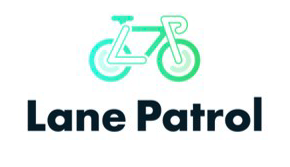 | Lane Patrol | Marc Figuls |
Quality Assurance Suppliers
Quality assurance is highly recommended for any CycleRAP assessment to ensure input data is correct and avoids anomalous results. The following experienced suppliers can provide quality assurance services:
| Supplier | Contact details |
|---|---|
| Roxy Tacq | Roxy Tacq |
| International Road Assessment Programme (iRAP) | Julio Urzua |
Interested in becoming a CycleRAP Trusted or Quality Assurance Supplier? Contact us
Would you like to join the CycleRAP Interest Group?
To receive periodic updates on the CycleRAP model, initiative developments and its use in global projects, sign up here.
For more information
Please contact:
Monica Olyslagers
Global Innovation Manager and Cities Specialist
monica.olyslagers@irap.org
irap.org/innovation
If you are based in the Netherlands, please contact:
Roxy Tacq
Urban Mobility & Road Safety Expert
roxytacq@icloud.com

CycleRAP Partners
